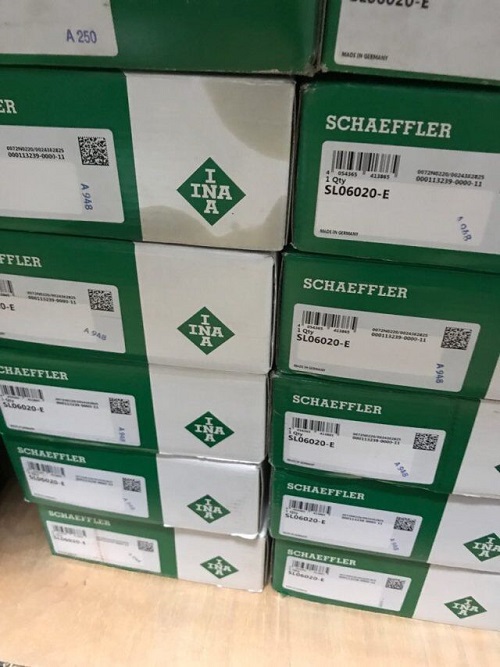Introduction to the Selection and Use of Industrial INA Bear
Writer: Eric Bearing Limited
Overview of industrial INA bearing selection
The market requirements for various mechanical devices and instruments that use rolling bearings in INA bearings have become increasingly stringent, and the requirements and performance of INA/FAG bearings have become increasingly diversified. In order to select the most suitable bearing from the numerous structures and sizes, it is necessary to study from various angles.When selecting a bearing, generally, the bearing structure is roughly determined by considering the ease of arrangement, installation, and disassembly of the bearing, the allowable space and size of the bearing, and the marketability of the bearing. Secondly, while comparing and studying the design life of various machinery using bearings and the various endurance limits of bearings, the bearing size is determined.
When selecting a bearing, it is often biased to consider only the fatigue life of the bearing. The grease life, wear and noise caused by the aging of the grease also need to be fully studied. Furthermore, according to different applications, it is necessary to select specially designed bearings for accuracy, clearance, cage structure, grease, etc. requirements. However, there is no certain order and rules for selecting bearings. The priority should be the conditions, performance, and the most relevant items required for INA bearings, which is especially practical. ERIC BEARING LTD have rich stock for INA SL06020-E bearings in stock , pls click here :
1. Conditions and performance required by INA bearings
(1) Operating conditions, environmental conditions
(2) Dimensions of INA bearing installation part
(3) Space allowed by INA bearings
(4) The size and direction of the load
(5) Vibration and shock
(6) Rotation speed, limit speed of bearing
(7) Tilt of inner ring and outer ring
(8) Fixing and bearing arrangement in the axial direction
(9) Ease of loading and unloading
(10) Noise, torque
(11) Rigidity
(12) Marketability and economy
2. Determine the bearing structure and arrangement
(1) Use machinery and design life
(2) Equivalent dynamic load or equivalent static load
(3) Rotation speed
(4) Allowable static load factor
(5) Allowable axial load (in the case of cylindrical roller bearings)
3. Determine the bearing size
(1) Accuracy of rotation oscillation
(2) High-speed rotation
(3) Torque fluctuation
4. Determine INA bearing accuracy grade
(1) Cooperation
(2) Temperature difference between inner ring and outer ring
(3) Rotation speed
(4) Tilt of inner ring and outer ring
(5) Preload
5. Determine (internal) clearance
(1) Rotation speed
(2) Noise
(3) Operating temperature
6. Determine the shape and material of the cage
(1) Operating temperature
(2) Rotation speed
(3) Lubrication method
(4) Sealing method
(5) Maintenance and repair
7. Decide on the lubrication method, lubricant and sealing method
(1) Loading and unloading sequence
(2) Tool card mold
(3) Dimensions related to installation
8. Determine the dimensions related to the installation
9. Decide how to load and unload
10 Final specifications of the bearing and its surrounding parts
Precautions for use
INA rolling bearings are precision parts, and their use must be carried out accordingly. No matter how high performance bearings are used, if they are used improperly, the expected high performance will not be obtained. Precautions for using INA bearings are as follows.
1. Keep the INA bearing and its surroundings clean.
Even small dust invisible to the eyes can have a bad effect on the bearing. Therefore, keep the surroundings clean to prevent dust from entering the bearing.
2. Use with caution.
A strong impact on the bearing during use will cause scars and indentations, which will cause accidents. In severe cases, it will crack or break, so be careful.
3. Use appropriate operating tools.
Avoid replacing with existing tools, you must use appropriate tools.
4. Pay attention to the corrosion of INA bearings.
When handling INA bearings, sweat on your hands can cause rust. Pay attention to the operation with clean hands, it is best to wear gloves as much as possible.
